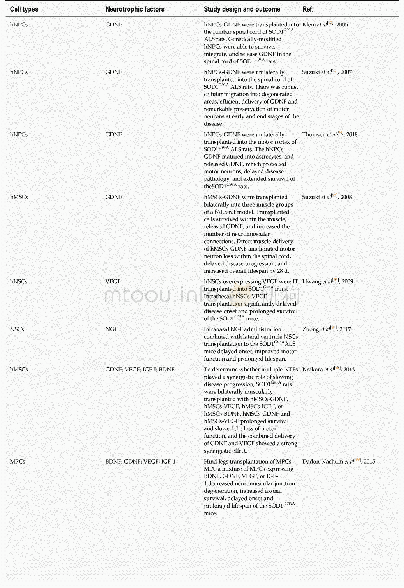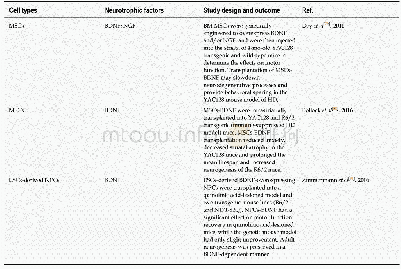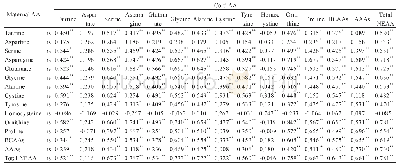《Table 2 Correlations between brain-derived neurotrophic factor levels and clinical and experimental
 提示:宽带有限、当前游客访问压缩模式
提示:宽带有限、当前游客访问压缩模式
本系列图表出处文件名:随高清版一同展现
《Increased expression of brain-derived neurotrophic factor is correlated with visceral hypersensitivity in patients with diarrheapredominant irritable bowel syndrome》
Spearman’s correlation coefficients are presented with P-values in parentheses.a P with significance after Bonferroni correction(adjusted P<0.0071).b P without significance after Bonferroni correction(adjusted P<0.0071).BDNF:Brain-derived neurotrophic
The demographics,clinical characteristics and psychological assessments of IBS-D patients and controls are presented in Table 1.There were 31 IBS-D patients(22 males and 9 females;median age 33.0 years,IQR:29.0-42.0)and 20 healthy controls(13males and 7 females;media age 28.0 years,IQR:26.0-36.0)participating in this study.There were no statistically significant differences in terms of age,gender,or body mass index between the groups.The average IBS-SSS score was 274.0(SD=29.8)and the median duration of disease was 5.0 years(IQR:2.0-10.0)in the IBS-D group.The median pain intensity for IBS-D patients was mild.Scores of VSI(IBS-D:median 54.0,IQR:44.0-61.0;control:21.0,17.3-30.0,P<0.01)and anxiety(IBS-D:median 6.0,IQR:2.0-10.0;control:3.0,1.0-4.0,P=0.003)were significantly elevated in IBS-D patients.The depression score tended to increase in the IBS-D group but the difference failed to reach the significant level(P=0.055).
| 图表编号 | XD0049334800 严禁用于非法目的 |
|---|---|
| 绘制时间 | 2019.01.14 |
| 作者 | Yu Zhang、Geng Qin、De-Rong Liu、Yan Wang、Shu-Kun Yao |
| 绘制单位 | Graduate School, Peking Union Medical College and Chinese Academy of Medical Sciences、Department of Gastroenterology, China-Japan Friendship Hospital、Graduate School, Peking Union Medical College and Chinese Academy of Medical Sciences、Department of Gastr |
| 更多格式 | 高清、无水印(增值服务) |
查看“Table 2 Correlations between brain-derived neurotrophic factor levels and clinical and experimental parameters in patien”的人还看了
-

- Table 4 Combination therapy of stem cells with neurotrophic factors in amyotrophic lateral sclerosis
-

- Table 4 Combination therapy of stem cells with neurotrophic factors in amyotrophic lateral sclerosis





